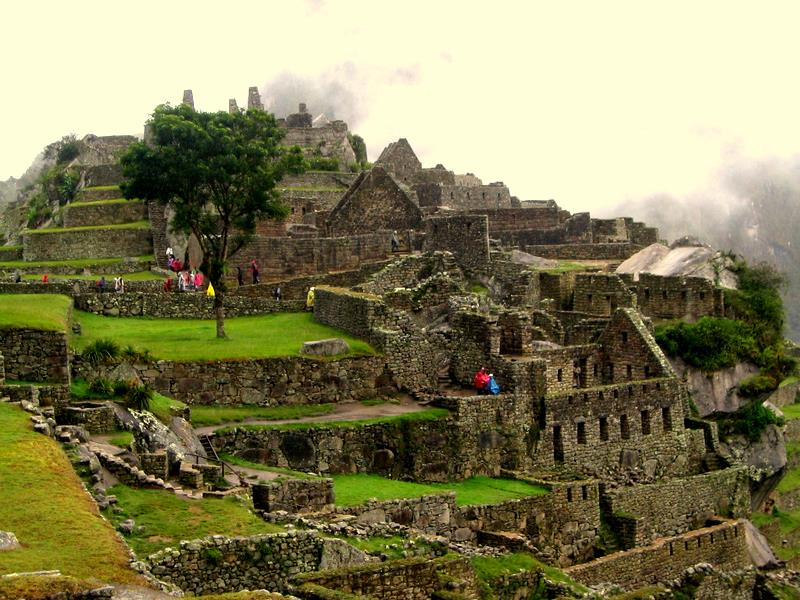
Machu Picchu. Photo by Jorge Gobbi, blogdeviajes.com.ar
The Sacred Valley, Machu Picchu, and Cusco have such an intertwined history and culture that it’s impossible to talk about one without referring to the other two. The Sacred Valley’s lush hillsides and snowcapped glaciers were regarded by the Inca, who ruled an area of South America larger than the Roman Empire, as paradise on earth. Machu Picchu is the expansive stone city downstream from the Sacred Valley that was carved by the Inca six centuries ago on a remote ridge in Peru’s cloud forest. Cusco is the antagonistic blending of the Inca and the Spanish, who demolished the Inca sun temples to make way for Catholic churches. Visitors to the Sacred Valley will still find stone huts, freshly tilled potato and quinoa fields, herds of alpaca, and Quechuan communities.Together, the Sacred Valley, Machu Picchu, and Cusco tell the stories of the Inca, who evolved from Peru’s rich, 7,000-year cultural history; of the Spanish at the height of the European Renaissance; and of the fragmented and difficult union of these old-world and new-world cultures, which developed apart for millennia until they were forced together in the Spanish conquest.Despite the conquest, Inca culture has proven remarkably resilient over the centuries, which creates the sensation of time standing still. Visitors to the Sacred Valley will still find stone huts, freshly tilled potato and quinoa fields, herds of alpaca, and Quechuan communities. Quechua, the Inca language that is spoken by six million Andean highlanders, is heard as often as Spanish along the narrow alleyways of Cusco. Inca Trail hikers who arrive at dawn at the Inti Punku, or Sun Gate, will see the fog rise gently from the terraces and perfect stone buildings of Machu Picchu, which was lost for centuries and therefore perfectly preserved.
We suggest that visitors to this region follow a deliberate sequence in order to best enjoy and understand the area. Start by spending a few days in the Sacred Valley to acclimatize to the altitude and experience the incredible natural and cultural world of the Inca. From the Sacred Valley, take an early morning train or hike the Inca Trail to Machu Picchu, the maximum incarnation of the Inca’s spiritual beliefs. And, after a full day at the ruins, return in the evening to Cusco and spend the next few days experiencing the complex colonial city, the amalgamation of the Inca and the Golden Age Spanish, which is best understood after spending time in the Sacred Valley and Machu Picchu.
Excerpted from the First Edition of Moon Cusco & Machu Picchu.